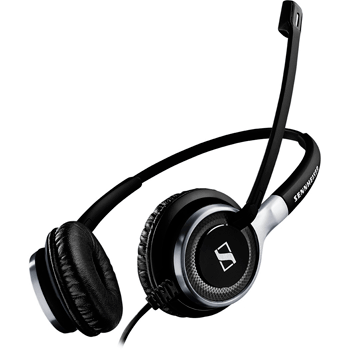
Sennheiser has been chosen by the Environment Agency as sole provider of its headsets and speakerphone equipment in a major revision of its telephony systems. A number of headsets and speakerphones are currently being rolled out across the agency to its office-based and mobile workforce as part of a refit of the organisation designed to improve quality and reduce costs. Sennheiser was chosen due to a range of benefits including comfort, long-lasting operation and importantly its strong adherence to environmental factors.
The Challenge:
The Environment Agency is in the process of replacing its telephony service as part of a move from traditional PSTN delivery to a VoIP Unified Communications solution. The basic need to communicate effectively and flexibly is of paramount importance, and there is a strong focus on finding a solution that provides quality, clarity and usability while remaining cost-effective.
The Solution:
The Environment Agency conducted an extensive in-house trial of a range of leading headsets and telephony equipment as part of its move to a Unified Communications and Jabber-compatible workforce. The aim of the project was to promote interdependent communication between flexible, agile teams that could work from anywhere and with anyone, from employees to partners and customers. This process must be conducted effectively and fluidly, and so an endpoint solution to enable staff to do so while reflecting the dynamic nature of the revised operation was a must.
 “We knew that our endpoint devices were an important part of the service. This is a business process change facilitiated by technology, so these devices had to be the same standard as the service we were creating” said Ben Thomas, Project Manager for the Environment Agency. “We went to market to find out what was out there and narrowed it down to three key suppliers for an internal evaluation. We investigated each company’s wired product, Bluetooth product, and Speakerphone product to cover the three main areas for desk-based and mobile use.”
“We knew that our endpoint devices were an important part of the service. This is a business process change facilitiated by technology, so these devices had to be the same standard as the service we were creating” said Ben Thomas, Project Manager for the Environment Agency. “We went to market to find out what was out there and narrowed it down to three key suppliers for an internal evaluation. We investigated each company’s wired product, Bluetooth product, and Speakerphone product to cover the three main areas for desk-based and mobile use.”
The Environment Agency trialled the Sennheiser SC 660 dual-sided headset, the PRESCENCE – its leading hands-free Bluetooth headset and the Speakerphone SP20 – a portable, powerful speakerphone designed to be used both in the fixed and mobile office.
The SC 660 was chosen due to, among other reasons, superb comfort for day-long operation. As a dual-sided headset designed for office professionals requiring HD voice clarity, the combination of comfort and quality, with effective noise cancellation for busy environments, made it the obvious choice.
It also opted for Sennheiser’s PRESCENCE Bluetooth headset for flexible operation, long battery life and fast charging – key factors for busy professionals on the move.
Finally the SP 20 SpeakerPhone was seen as the ideal accompaniment to extend its mobile office capabilities and deliver a solution that was equally at home in a fixed position or to carry when on the move.
Before being chosen by the Environment Agency, Sennheiser’s products went through a rigorous testing procedure to ensure that only the most effective solutions are being utilised at every stage of the process.
“We found that Sennheiser came out on top in key areas of our testing, often by a fair margin.“ said Ben Thomas. “Comfort was a key criteria with many staff attending to calls throughout the day. A warranty period that reflects the company’s confidence in its product is a reassuring advantage.
“We also decided to look at the technology used in the build of the product – of the individual components, and make a judgement based on that. Battery life was a very big factor for us – often you find that what the manufacturer says it is and what it actually is is very different, so during our own tests we managed to make a judgement on this – and did in fact find some significant differences between manufacturers‘ claims.
“Similarly charge time is important – the speed of charge, which can be utilised between calls, could be a game changer, and again we saw some standout areas.”
But it was not just comfort and quality that fell under the microscope during the Environment Agency’s rigorous process. Sennheiser was also judged on factors that may not immediately seem important, but actually reflect a key part of an overall strategy to deliver in all areas of its product and service offerings – from development to delivery.
“Of course due to the nature of our business, we took a strong look at the environmental considerations each company takes with its products, including packaging, the materials that come with the device itself, fittings, the background of how the company operates and a number of other criteria. Sennheiser came out head and shoulders above the rest here – they package products only with what you really need and of course the packaging itself is fully recycled.”
Finally, it was Sennheiser’s dedication to customer support alongside its extensive portfolio of products that deliver consistent quality across the board that sealed the deal:
“We also needed a strategic partner going forwards. Sennheiser proved to us that it could be relied upon for both support and advice and a consistent, high product standard.”
The Environment Agency is starting to roll out the new headsets and speakerphones across the organisation.
